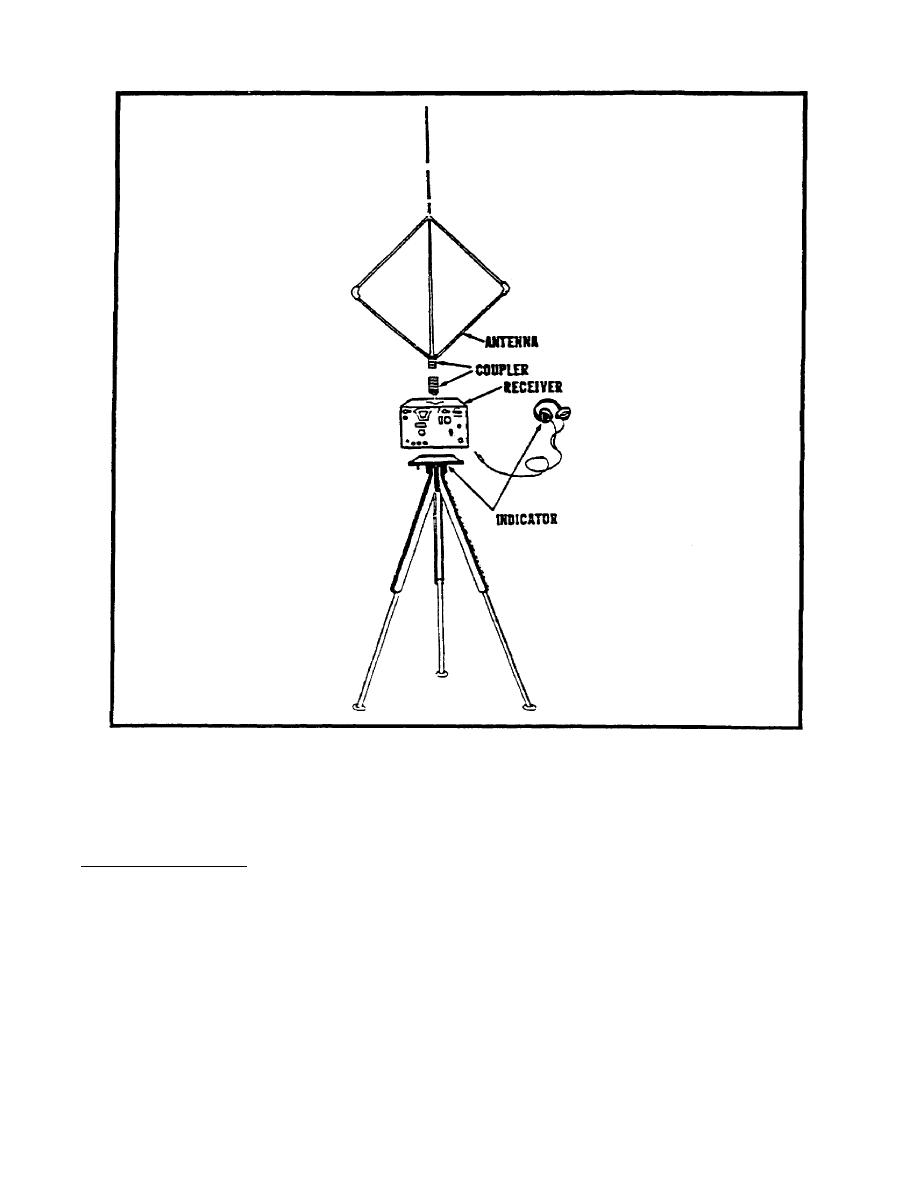
Figure 2-2. Basic components.
Or, put another way, if you hold a pencil you can tell where the point is by looking, but where
is the exact middle of either side?
The coupling system. This is the device that connects the antenna to the receiver. The
directional antenna must be rotated in a circle to detect the angle of arrival of the radio wave.
If we were to use a simple antenna cable, it would soon twist until it broke. Several systems
have been devised but all can be identified as either manual or electronic. The simplest
system is the direct coupling in your portable radio. The problem is that it requires us to
rotate the receiver as well as the antenna to determine the angle of arrival. This would be
difficult with our large systems. Another manual coupling is slip ring and brushes. This is an
antenna which is rotatable but maintains contact by means of brushes (such as in the
generator of your car touching slip rings which allows the signal voltage to pass freely from
the antenna to the receiver). For direction finding antennas that are too large to be normally
rotated, a device



 Previous Page
Previous Page
